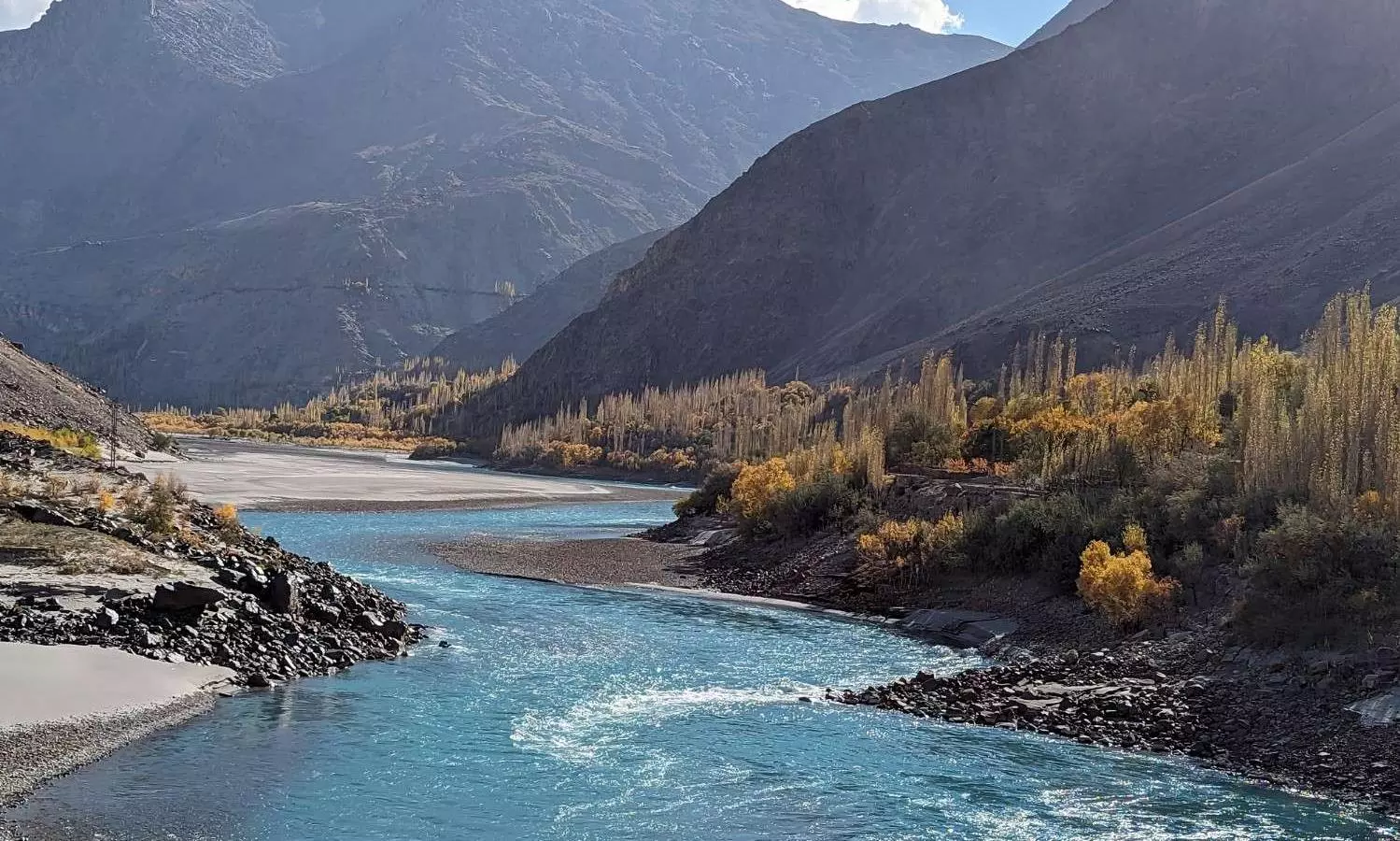
Scrapping Indus Water Treaty: A tactical move with advantages, and risks
The revocation appears less as a standalone act and more as an opening gambit in a wider campaign to reset terms of engagement with Pakistan

In hindsight, India’s decision to revoke the Indus Waters Treaty (IWT) in the wake of the Pahalgam terrorist attack appears not merely as a reaction to technical disagreements over hydroelectric projects but as a calibrated move in a broader strategic realignment -- one that anticipated, and in some ways catalyzed, the current military conflict with Pakistan.
The treaty, once hailed as a rare example of cooperation between two hostile neighbours, had long been under strain. Yet few anticipated that India would go so far as to unilaterally exit a World Bank-brokered agreement that had weathered three wars and numerous diplomatic stand-offs.
Also Read: Can India really stop Indus water from flowing into Pakistan?
Focus on geopolitics
That India chose to do so just days before armed hostilities flared beyond the Line of Control (LoC) signals that the revocation was as much about geopolitics as it was about water.
According to geo strategist and columnist Brahma Chellaney, it had been the most generous water sharing agreement by an upper riparian country, in modern world history, reserving 80.52 per cent of waters annually for Pakistan.
Enduring major wars
Signed in 1960, the IWT allocated the three eastern rivers (Ravi, Beas and Sutlej) to India and the three western rivers (Indus, Jhelum and Chenab) to Pakistan, with India allowed limited, non-consumptive use of the western rivers.
Despite deep mutual distrust, the treaty endured for over six decades -- its resilience often cited as evidence that even adversaries could cooperate over shared resources.
Indian frustration
In his 2024 study published in the Centre for Joint Warfare Studies, Brigadier SK Singh argued that “the Pakistan Punjab with 25 million people got more than 50 per cent water, whereas Indian Punjab with 21 million population with less than 20 per cent irrigated land were allotted only 20 per cent of water. This created imbalance in water to land to population ratios, which was more detrimental to Indian Punjab”.
In the years leading up to its revocation, India’s frustration had been mounting. Pakistan’s repeated legal challenges to Indian hydropower projects -- especially Kishanganga and Ratle -- were seen in New Delhi as attempts to stifle development in Jammu and Kashmir under the guise of treaty compliance.
India’s hardening stance
India had formally issued a notice in early 2023 seeking modifications to the treaty, citing Pakistan’s refusal to resolve disputes through the neutral expert mechanism, instead escalating them to the Court of Arbitration. When Pakistan failed to respond substantively within the mandated 90-day period, India had already proceeded to declare the treaty null and void.
Also read: Explained: What is Indus Waters Treaty? How will its suspension hit Pakistan?
While the revocation was presented as a legal and administrative decision as a punitive action, it coincided with a broader hardening of India’s stance on Pakistan. The terrorist attack, coupled with the build-up of military assets along the border, escalating ceasefire violations, and increased political rhetoric, all pointed to a shift away from strategic restraint.
Redrawing strategic boundary
Once conflict erupted following the Pahalgam terrorist attack on unarmed civilians -- an act backed by Pakistan-based groups -- the water question took on an overtly strategic dimension. Indian officials began linking water control with national security, framing the IWT as an outdated arrangement that enabled Pakistan’s "proxy war" without consequences.
In this context, the revocation appears less as a standalone act and more as an opening gambit in a wider campaign to reset terms of engagement with Pakistan -- across diplomacy, trade, military doctrine and resource control.
The revocation now allows India to proceed unencumbered with stalled hydroelectric projects in Jammu and Kashmir, projects long delayed by procedural bottlenecks under the IWT. Domestically, it was seen as a strong assertion of sovereignty and sent a clear message to both Pakistan and domestic audiences that India would not be bound by Cold War-era compacts in a new security landscape.
Risks involved
Yet, the move also carries risks. It prompts Pakistan to internationalize the issue, with appeals to the United Nations and the International Court of Justice, and added a new layer of instability to an already volatile situation. In the ongoing military conflict, Pakistan has warned that any attempts by India to alter natural flows of the western rivers could be treated as an “act of war”— in an already warlike situation.
From an environmental standpoint, the collapse of a functioning river-sharing mechanism has alarmed hydrologists and conservationists across the region. Without data sharing or flood forecasting protocols, the risks of miscalculation, dam mismanagement and seasonal water shocks -- especially under changing climate conditions -- have increased.
Despite the deterioration in relations, some analysts believe that the revocation may eventually create space for a more modern and balanced agreement. Indian officials had consistently stated – before the military conflict began -- that they are open to renegotiating a framework that reflects present-day needs -- provided Pakistan approaches such dialogue without preconditions or attempts to revive the older treaty in its original form.
China factor
However, in the current military climate, such a dialogue seems unlikely in the near term. For Pakistan, renegotiation under fire would be politically unviable. For India, restoring an old format would be seen as a strategic retreat.
Whether it leads to a new, more realistic treaty in the years to come or becomes a precedent for further decoupling depends not only on the outcome of the ongoing conflict but on whether both countries are willing to view water not as a weapon but as a shared resource demanding cooperation in a turbulent region.
Some experts and diplomats have also expressed concern that this move could set a precedent, potentially prompting China to adopt a similar stance regarding rivers that flow into India from its territory.
